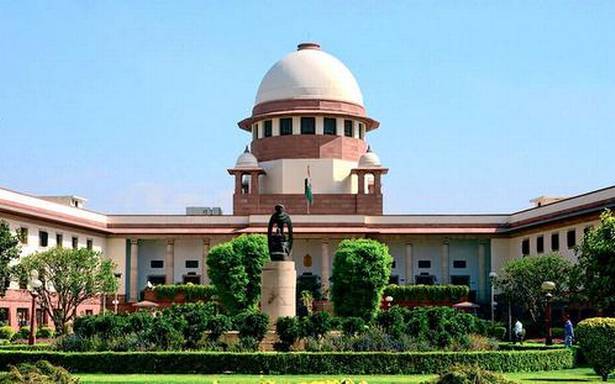CJI Ramana urges speed from govt. to fill growing judicial vacancies
Half of the 12 names reiterated by the Supreme Court Collegium for judicial appointments to various High Courts were originally sent to the government two years ago.
These six names, reiterated by the Collegium led by Chief Justice N.V. Ramana on September 1, were recommended by an earlier Collegium headed by then Chief Justice of India Ranjan Gogoi in July and October 2019. The present CJI was part of the Gogoi Collegium.
Advocates Jaytosh Majumdar, Amitesh Banerjee, Raja Basu Chowdhury and Lapita Banerji were first recommended by the Gogoi Collegium for the Calcutta High Court Bench on July 24, 2019. Advocate Farzand Ali was recommended to the Rajasthan High Court Bench by the Gogoi Collegium on the very same day.
In both cases, the Collegium explained that it had interacted with the advocates, “carefully scrutinised” the names for assessing “merit and suitability” and was of the “considered view” that they were fit to be High Court judges. Yet, they had not been cleared by the government.
The sixth name, advocate Moksha Kazmi (Khajuria), was first recommended to the Jammu and Kashmir High Court Bench on October 15, 2019.
The remaining six names reiterated by the Ramana Collegium, variously on August 24 and September 1, include three judicial officers to Allahabad High Court Bench, an advocate to the Jammu and Kashmir High Court and two advocates to the Karnataka High Court. The recommendations of their names date back to February and March this year.
The reiteration of these names, along with the recommendation of 56 new ones to various High Courts in one go, was closely followed by Chief Justice Ramana’s friendly nudge to the government at a public function on Saturday to clear all of them expeditiously. This nuanced approach of getting the message across to the government through the reiteration of the names while carefully maintaining a measured bonhomie was evident from the CJI’s account of his first meeting with the new Law Minister, Kiren Rijiju.
“He asked me ‘what is the problem?’. I told him the first problem is filling up the vacancies. To expedite the filling up of vacancies… That is the first priority,” Chief Justice Ramana recounted in Mr. Rijiju’s presence on the dais.
Having said that, the CJI complimented the Law Minister for getting to work immediately and clearing the nine names recommended by the Collegium for the Supreme Court.
“Nine names were cleared in six days. That is a record. Thanks to him, they were cleared with jet-speed. I am very happy to be a party with him in all the decision-making process. I must thank the Prime Minister and the Law Minister… I expect the same jet-speed in clearing the names for the High Courts,” the CJI conveyed.
The CJI also made it clear that judicial appointments were an “on-going process” in which speed in decision-making was of the essence. This seems to be a clear signal to the government that promptness in clearing names should not be a one-off. The court expects the government to show the same alacrity with which it cleared the nine names in future appointments to the High Courts.
“We hope to live up to the herculean challenge of filling up nearly 41% vacancies existing in all the High Courts… In another month, we expect at least 90% of the vacancies filled up in the country,” the Chief Justice spoke for the judicial institution.
Law Ministry figures on September 1 show there are 465 judicial vacancies in 25 High Courts as against a total sanctioned strength of 1098 judges.
Mr. Rijiju, in turn, has politely returned the court’s compliment. “In our first interaction, I realised that we have a CJI in whom we have full faith and trust,” he told the audience on Saturday.
Source: Read Full Article

